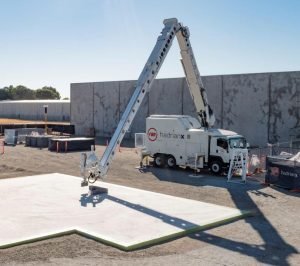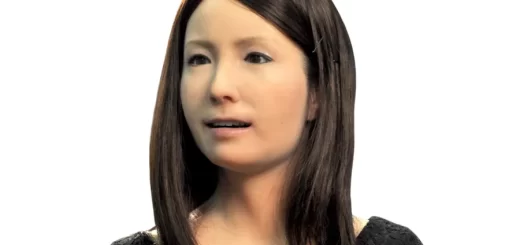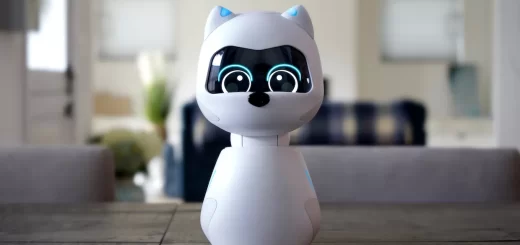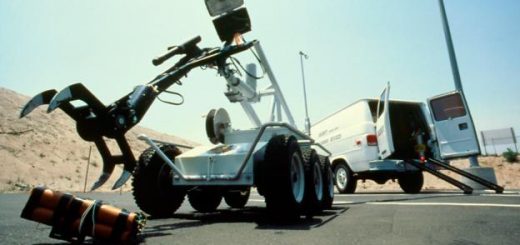Hadrian X robot review, use, advantages and disadvantages
Hadrian X is an Australian-developed robotic system designed for autonomous bricklaying. It can construct entire houses with impressive speed and precision. The robot‘s precise bricklaying can minimize waste and optimize material usage. The robot uses advanced computer vision and laser technology to ensure each brick is laid perfectly, minimizing errors and waste.
Hadrian X robot
Hadrian X is a groundbreaking robotic system designed to revolutionize the construction industry. Developed by Australian company Fastbrick Robotics, it’s the world’s first mobile robotic bricklaying machine capable of working outdoors in uncontrolled environments.
Hadrian X isn’t just a bricklaying machine, it’s a marvel of engineering and a glimpse into the future of construction. Forget human bricklayers who can lay around 300-400 bricks a day. Hadrian X can lay a whopping 1,000 bricks per hour! That’s enough to build the walls of a small house in one day.
Hadrian X doesn’t just use any bricks. It specializes in laying custom-designed blocks that are 12 times bigger than standard bricks. These blocks are lighter, stronger, and have built-in channels for wires and pipes, making construction more efficient.
Hadrian X uses a special industrial adhesive that bonds the blocks together in just 45 minutes. This super-strong glue makes the walls four to five times stronger than traditional mortar and improves the building’s insulation and soundproofing. Hadrian X eliminates the need for human workers to work at heights or in hazardous conditions, improving safety on construction sites.
Hadrian X is designed to work outdoors in all weather conditions, unlike human bricklayers who have to take shelter when the skies open up. Hadrian X is a meticulous builder. It uses laser technology and advanced vision systems to place each block with pinpoint accuracy. No more uneven walls or wobbly structures!
Although primarily a bricklaying whiz, Hadrian X has the potential to learn new tricks. Researchers are exploring ways to equip it with additional tools and capabilities, making it a versatile construction robot in the future. Hadrian X is an Australian invention, but its impact is global.
Hadrian X is not just about speed and efficiency; it’s also about sustainability. The custom blocks minimize waste, and the faster construction times reduce the environmental impact of building projects. Hadrian X is named after the Roman emperor Hadrian, known for his ambitious building projects, including the Hadrian’s Wall in England. This fitting name reflects the robot‘s potential to leave a lasting mark on the construction industry.
Advantages of Hadrian X
Hadrian X can lay bricks significantly faster than a human bricklayer, potentially building a house in as little as a day. This translates to faster project completion times and reduced labor costs. The robot uses advanced sensors and software to ensure each brick is laid perfectly, eliminating human error and improving the overall quality of the construction. This can result in stronger, more durable walls.
Hadrian X operates autonomously without requiring workers to work at height or handle heavy materials, reducing the risk of injuries to construction workers who would otherwise be exposed to potential hazards like falling bricks or heavy machinery. It can improve safety on construction sites. The system optimizes brick usage, minimizing waste and lowering material costs. its precise movements generate less dust and debris compared to traditional construction methods.
Hadrian X can handle various brick types and sizes, making it adaptable to different building designs and materials. The construction industry faces a growing labor shortage, particularly for skilled trades like bricklaying. Hadrian X could help alleviate this issue by automating a key task.
The robot can handle various brick and block types and work in diverse environments, including residential and commercial construction sites. Hadrian X can optimize material usage and reduce construction waste, leading to a more sustainable building process.
Disadvantages of Hadrian X
Hadrian X is a complex and expensive machine, with an estimated cost of around $2 million per unit. This high initial investment could deter many construction companies, particularly smaller firms. While Hadrian X excels at bricklaying, it’s a single-purpose robot. It cannot perform other construction tasks like carpentry, plumbing, electrical work or finishing, requiring human intervention for a complete build.
Operating in outdoor environments presents challenges for robotics. Factors like wind, rain, and uneven terrain can disrupt Hadrian X‘s operations and require human monitoring and adjustments. The widespread adoption of Hadrian X and similar robots could lead to job losses in the construction industry, particularly for bricklayers. This raises ethical and social concerns about the impact on the construction workforce that need to be addressed and necessitates workforce retraining programs.
The use of robotic technology in construction is still relatively new, and there may be regulatory hurdles to overcome before Hadrian X can be widely adopted. The robot‘s complex technology and reliance on sensors and software make it susceptible to technical glitches and breakdowns, potentially causing delays and downtime.
You can follow Science Online on Youtube from this link: Science online
Robotics, Automation in Construction uses, advantages and disadvantages
The importance and uses of robots in medicine




